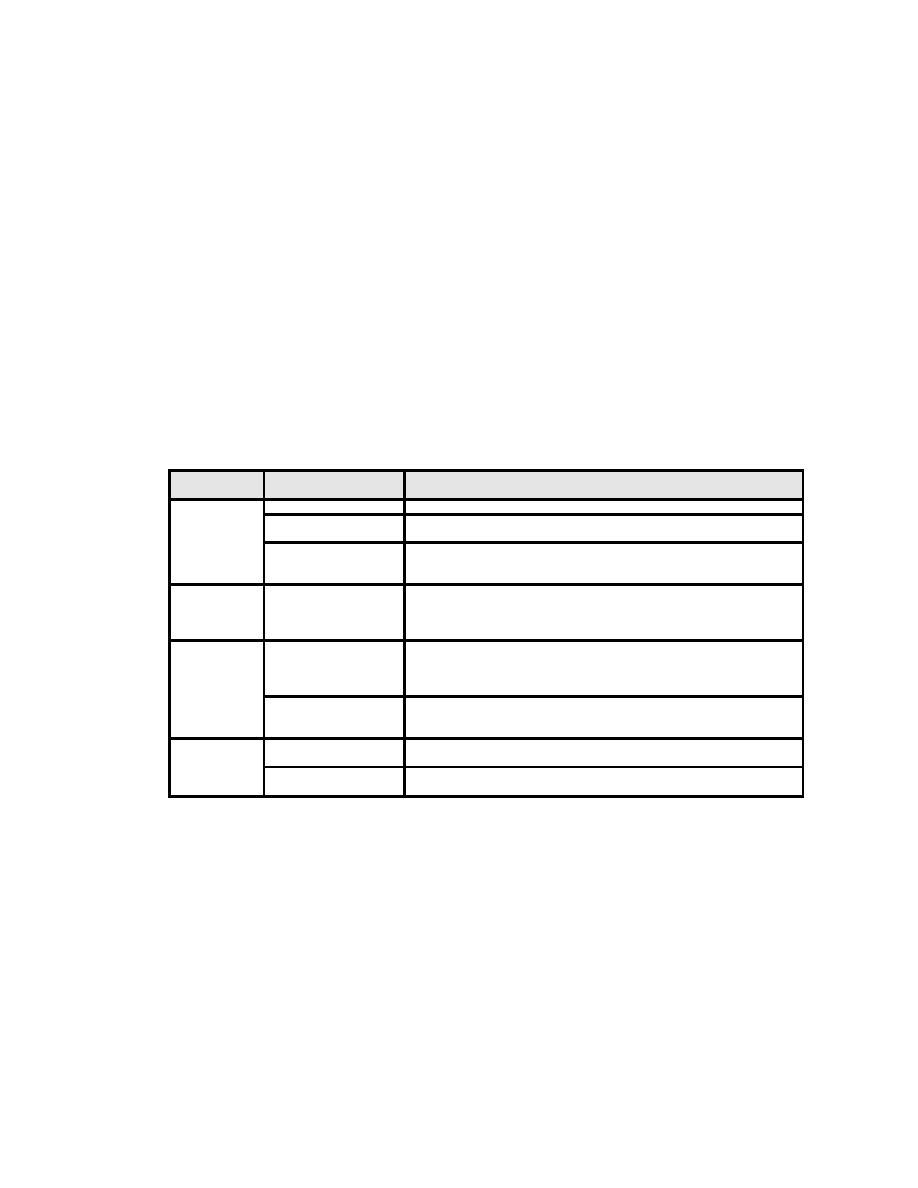
Fundamentals of Fluvial Geomorphology and Channel Processes
varied between the 1.01- and 32-year recurrence interval. Only about a third of those streams
had a bankfull discharge between the 1- and 5-year recurrence interval discharge. Knowledge
of alluvial landforms will allow a more informed determination of bankfull than depending
solely on the magnitude of the flood.
Table 2.1 and Figure 2.2 together provide a quick summary of some alluvial landforms
found along a meandering stream. From the perspective of a stream stabilization planner, it
is extremely important to know that all the materials along the bank and in the floodplain are
not the same. The materials are deposited under different flow conditions. For example,
backswamps and channel fills will usually be fine-grained and may be very cohesive. This
is because both landforms are deposited away from the main flow in the channel, in a lower
energy environment. Natural-levee deposits are coarser near the channel and become finer
away from the channel as the energy to transport the larger particles dissipates.
Table 2.1 Classification of Valley Sediments
Place of
Name
Characteristics
Deposition (1)
(2)
(3)
Channel
Transitory channel deposits Primarily bedload temporarily at rest; for example, alternate bar deposits.
Lag deposits
Segregation of larger of heavier particles, more persistent than transitory channel
deposits, and including heavy mineral placers.
Channel fills
Accumulations in abandoned or aggrading channel segments, ranging from
relatively coarse bedload to plugs of clay and organic muds filling abandoned
meanders.
Channel
Lateral accretion deposits
Point and marginal bars which may be preserved by channel shifting and added to
margin
overbank floodplain by vertical accretion deposits at top; point-bar sands and silts
are commonly trough cross-bedded and usually form the thickest members of the
active channel sequence.
Overbank flood
Vertical accretion deposits Fine-grained sediment deposited from suspended load of overbank floodwater,
plain
including natural levee and backswamp deposits; levee deposits are usually
horizontally bedded and rippled fine sand, grading laterally and vertically into point-
bar deposits. Backswamp deposits are mainly silts, clays and peats.
Splays
Local accumulations of bedload materials, spread from channels on to adjacent
floodplains; splays are cross-bedded sands spreading across the inner floodplain
from crevasse breaches.
Valley margin
Colluvium
Deposits derived chiefly from unconcentrated slope wash and soil creep on adjacent
valley sides.
Mass movement deposits
Earthflow, debris avalanche and landslide deposits commonly intermix with
marginal colluvium; mudflows usually follow channels but also spill overbank.
Point bars represent a sequence of deposition in which the coarser materials are at
the bottom and the finer materials at the top. From the viewpoint of the channel stabilization
planner, the more erosion resistant materials may then be silts and clays deposited at the top
and very erosive sand may comprise the toe of the slope. Therefore, if the channel you are
attempting to stabilize is eroding into an old point bar deposit, you may encounter several
problems. Along the same line of thinking, an abandoned channel fill may appear on the
eroding bank as a clay plug.
Different types of bank instability can also arise depending on how the materials were
deposited. Consider a point bar deposit with a sandy base that has been deposited over a
backswamp clay deposit. This can result in sub-surface flow at the sand-clay interface that
9




 Previous Page
Previous Page
